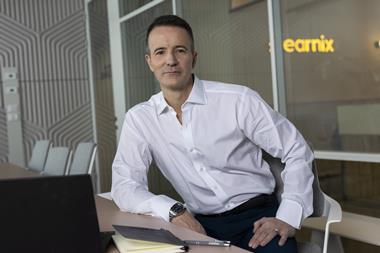Cloud-based microservices technology, compared to traditional monolithic systems, offers flexibility, says chief technology and information officer
Covéa Insurance aims to “challenge the status quo” of the “same tired technology platforms by investing in a cloud-based microservice architecture, according to the insurer’s chief technology and information officer Graeme Howard.
Putting this into practice, Covéa Insurance partnered with startup insurtech Iotatech in June 2021 to launch a new data-driven platform, which currently services motor business through a product partnership with Discovery-owned insurance company Vitality.
Howard explained that the idea for this joint venture came from the digital advancements he witnessed in the banking sector. Based on these innovations, he thought the slow-moving insurance industry was “ripe for disruption”, therefore he wanted to “challenge the status quo” rather than rely on “the same tired technology and platforms”.
On partnering with a startup, Howard said “the whole ethos of what we’re doing is to create an ecosystem, so we can partner with large affinity partners for small insurtechs – that to me is the beauty of the architecture”.
He continued: “It was important to me that I didn’t judge a book by its cover and say ‘well, you are too small, how could you possibly have the smarts to help?’ It was more judging it on the value that it can help us achieve.”
For Iotatech director Robert Thomson, what was “really good” for Iotatech as a small company was that Covéa had a “clear vision” on what it wanted to achieve and by when.

Devil is in the details
Although launching a new platform during the Covid-19 pandemic already posed different challenges, Howard highlighted that an additional consideration is that Covéa is a mid-sized insurance company with nearly 500 staff working in digital.
Therefore, scale wise, the insurer had “a number of different teething troubles to get through” – such as understanding a common working pattern between the companies’ staff, he said.
He continued: “There was a huge amount to do and although we had a very clear vision of what we were going to achieve, the devil is in the details sometimes when you’re creating a brand new policy admin solution – it is quite complicated.”
In comparison, Iotatech increased its headcount from 10 full time staff to 75 during the 18-month period it took to create, develop, test and launch Covéa’s platform.
“Clearly we had to move fleet of foot on that, so that was our challenge, and then we had to do it remotely come lockdown”, Thomson said.
Aiming to constantly evolve, Covéa’s plans for the platform consists of looking at home, pet and commercial insurance – “expanding the microservices out to fulfil those different markets”, explained Howard.
He continued: “We’ve got hundreds of legacy systems from mergers and acquisitions, old technology, and the idea is to generate one flexible platform that can be at the centre of our ecosystem.”
Considering other insurers investing in startup insurtechs, Howard said: “You’ve got to be quite careful not to ruin the thing you’re working with or your board”.
He continued: “It’s making sure you keep sight of the value that they’re driving and the whole reason why you went to them in the first place. In theory, you can quite easily lose sight of that by lots of process, too much governance, [or] corporate rigour – you [must] balance that out.”
Alongside the flexibility offered by insurtechs, using these businesses to adapt at pace is also key as “technology moves at such a speed”.
“If you’re too slow by the time you’ve completed [your project], it’s irrelevant anyway, so I think you need to move at pace”, Howard said.
Moving away from ’monolithic’ systems
Iotatech director Robert Thomson said that the firm’s partnership with Covéa Insurance has enabled the insurtech to act as a “speedboat” in transforming the insurer’s “super-tanker” legacy systems.
The benefit of using software-as-a-service for a platform such as Covéa’s, according to Thomson, is that insurers can move from having a capital expense (Capex) to an operational expense (Opex), which can work to remove barriers to entry to a market.
“Accountants tend to like to know what their technology is costing them – when you’re truly cloud-based you can do that, [but] when you stick an old application in the cloud you can’t,” he explained.
This is why Iotatech uses cloud-based microservices - this is a cloud native architectural approach where a single application is made up of many smaller components or services, according to IBM.
Operating like a technology engine room, this enables the creator or user to control separate entities rather than having to change the whole technology architecture if they wish to make changes.
Graeme Howard, Covea’s chief technology and information officer, said: “If you imagine you’ve got a massive solution – it’s thousands and thousands of bits of code – you can just take the small pieces out and change it, put a new solution in, do something different in the market – you can imagine how you can twist the platform fairly rapidly, it doesn’t need to be completely different each time.”
Traditionally, systems were written in a “monolithic basis”, said Thomson - this refers to one large, code-based system.

Click here to take part - all brokers that take part will receive an executive summary of the full report and be entered into a prize draw to win £250 John Lewis vouchers












































No comments yet